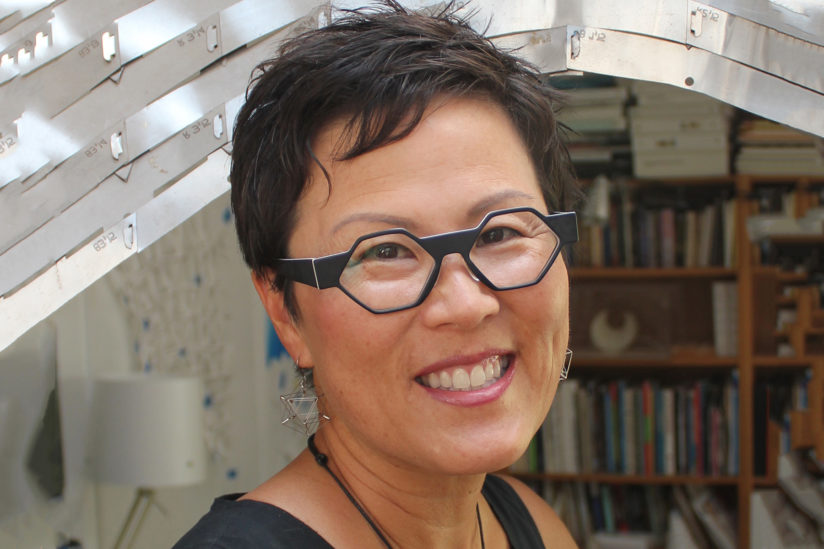Though Doris Sung has won awards before, she hopes this particular one — the Cooper Hewitt 2021 National Design Award for climate action — will inspire the next generation of architects at USC.
Doris Sung is no stranger to recognition.
The founder of DOSU Studio Architecture and co-founder of TBM Designs has won numerous awards in both architecture and the arts. Her TEDx Talk has been viewed over 1.2 million times. She’s received fellowships from Google’s R+D for the Built Environment, United States Artists and the Rockefeller Foundation at Bellagio.
Still, she admits that winning the Cooper Hewitt 2021 National Design Award for climate action hasn’t quite set in yet.
“[This award] goes beyond the limits of what we as architects can do,” said Sung, director of undergraduate programs and associate professor at the USC School of Architecture. “It’s an organization that is in tune with not only the arts and a high level of design but a strong interest in equity and newer ideas about technology and materials.”
Started in 2000, the National Design Awards launched as an official project of the White House Millennium Council. The goal was to increase awareness and understanding of how design improves everyday life. The Cooper Hewitt, Smithsonian Design Museum is one of 19 museums that fall under the wing of the Smithsonian Institution.
Doris Sung’s climate action design focuses on affordability, wellness
An example of the shades is currently on display on the campus of California State University, Long Beach. The sm[ART]box, presented by the Carolyn Campagna Kleefeld Contemporary Art Museum, is a 20-foot steel shipping container with the InVert Self-Shading Window System installed that measures temperature and energy used.
The window is designed for large commercial buildings, as they would consume more energy to cool a larger space, but Sung said the same tech could be applied to residential areas as well. In fact, one of the key issues Sung took into consideration when starting this project was affordability.
“I don’t want to make these products that are just going to be used on expensive, fancy buildings, but as a product that can be used for everybody anywhere,” she said.
